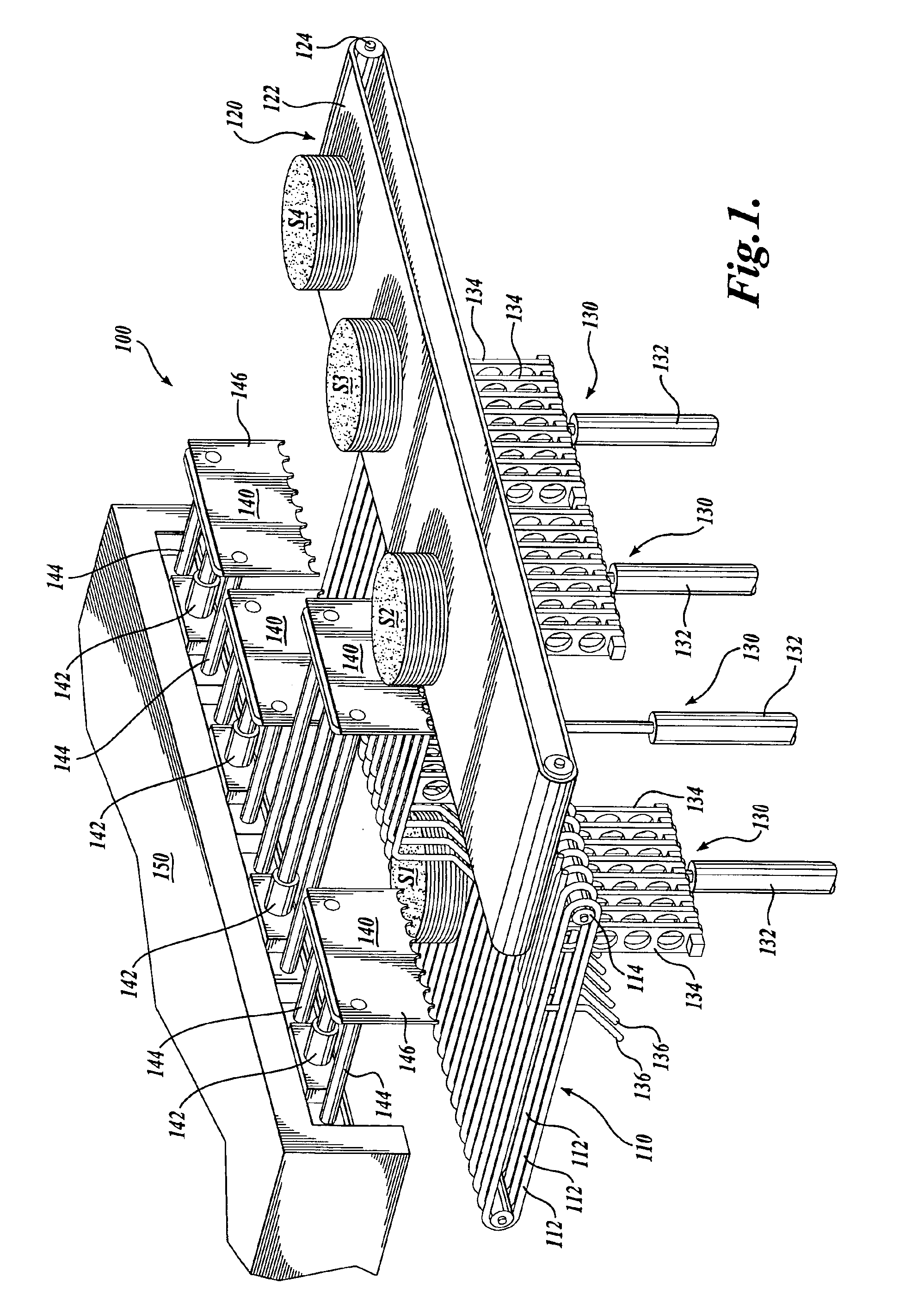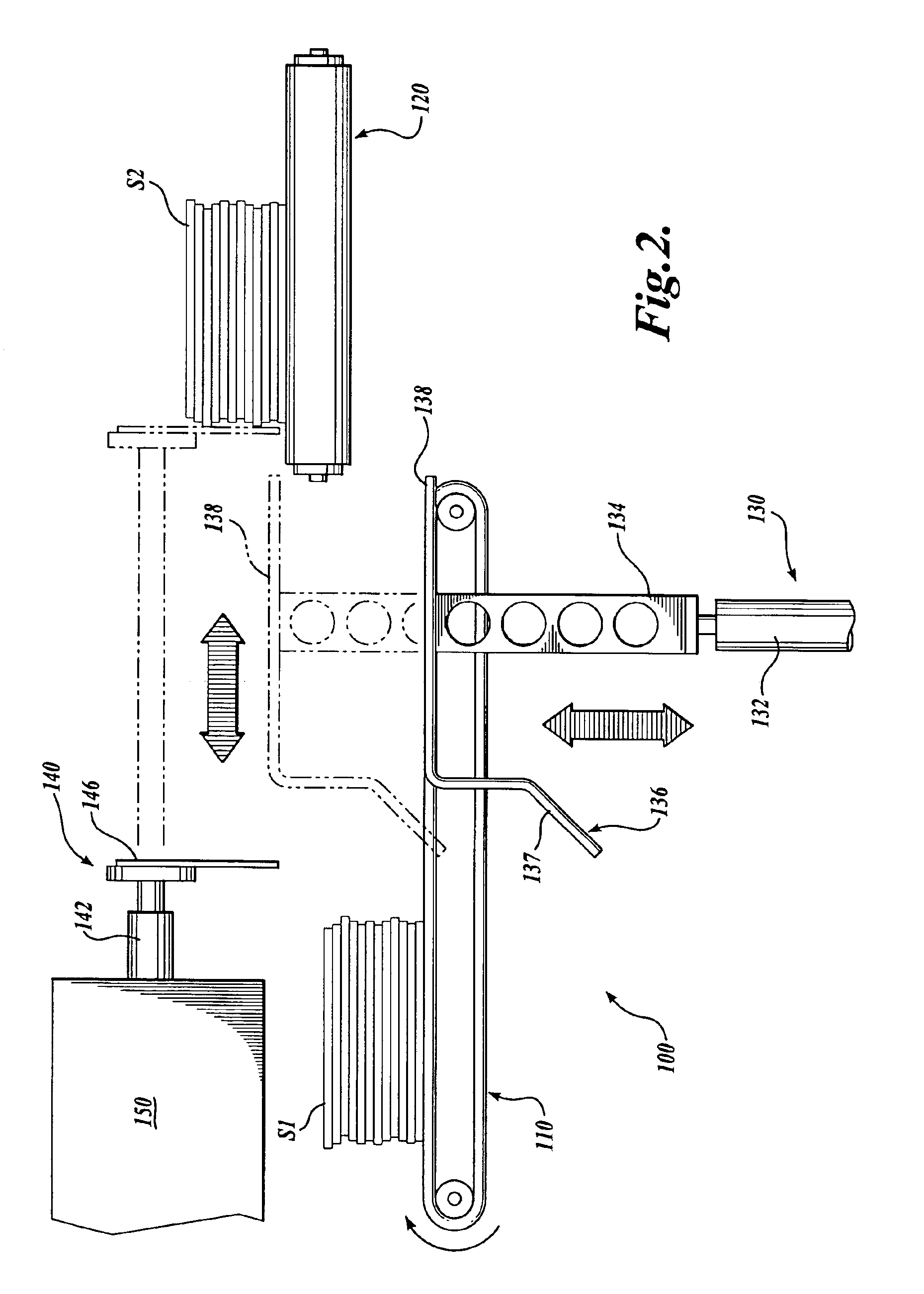Conveyor transfer apparatus
a technology of conveying equipment and conveyors, which is applied in the direction of mechanical conveyors, stacking articles, thin material processing, etc., can solve the problems of inefficient economic efficiency, repetitive manual steps, and underutilization of resources for repetitive tasks,
- Summary
- Abstract
- Description
- Claims
- Application Information
AI Technical Summary
Benefits of technology
Problems solved by technology
Method used
Image
Examples
Embodiment Construction
Referring now to the figures, wherein like numbers indicate like parts, a description of a preferred embodiment of the present invention is described in detail to illustrate the invention and to aid the artisan in understanding the present invention.
FIG. 1 shows a simplified perspective view of a conveyor transfer apparatus 100 as an exemplary embodiment of the present invention, wherein conventional and well-known structures, such as support structure and drive mechanisms, are removed in order to better show novel aspects of the invention. The conveyor transfer apparatus 100 receives stacks S1, S2, S3, S4 of flat product, such as corn or flour tortillas, from an upstream processing apparatus—for example, from the out-feed conveyor of a counter / stacker apparatus (not shown). In certain conventional tortilla production facilities, individual tortillas are formed in an array on a relatively wide conveyor, and cooked in a continuous process as they pass through an oven apparatus. The i...
PUM
 Login to View More
Login to View More Abstract
Description
Claims
Application Information
 Login to View More
Login to View More - R&D
- Intellectual Property
- Life Sciences
- Materials
- Tech Scout
- Unparalleled Data Quality
- Higher Quality Content
- 60% Fewer Hallucinations
Browse by: Latest US Patents, China's latest patents, Technical Efficacy Thesaurus, Application Domain, Technology Topic, Popular Technical Reports.
© 2025 PatSnap. All rights reserved.Legal|Privacy policy|Modern Slavery Act Transparency Statement|Sitemap|About US| Contact US: help@patsnap.com



